One of the projects you’ll be doing in year 9, is building an earthquake-proof building out of pasta and blu tack. This is a science project in which, you pick your groups and brainstorm, research, design and build a building able to withstand seismic waves, both transverse (secondary and rolling waves) and longitudinal (primary waves). Earthquakes are natural disasters, which are the negative impact following an actual occurrence of natural hazard in the event that it significantly harms a community. A famous recent earthquake would be the 2005 Kashmir earthquake. The earthquake was a 7.8 magnitude earthquake which shook the Kashmir region, as well as Pakistan, India and Afghanistan. More than 80000 people perished during this earthquake and around 4 million others were left homeless. While earthquakes are not a solvable problem, there are various ways to mitigate the damage caused to infrastructure and the livelihood of people. Some ways to reduce these damaging consequences is the use of construction techniques used to make a building earthquake-proof, such as base isolation, shear walls and cross braces, counterweights and more. These concepts are mainly for real buildings which use wood, metal and other materials, but we can transfer some of these techniques to our pasta building.
In this project, I worked with Dylan, Alicia, Andy and Eva. All of us contributing had created an amazing construction masterpiece, which was able to withstand the final test. We used an engineering process to help us make our earthquake-proof building. First, we defined our problem, linking it to the real world and our pasta buildings. Brainstorming and research were next, in which we plopped down ideas on a mind map and started researching possible solutions we could transfer onto our pasta-building design. We had made a design, counting how many materials were needed and transferring the knowledge of triangles being the strongest shape. We had made our base out of triangles to make sure the building would not collapse. Creating was the most challenging and time taking out of all the processes. We had roughly spent 3-4 periods on this. Testing and evaluating were next, and our structure had survived all earthquake simulations.
This project also had some requirements on our earthquake-proof building in which, made the design and construction harder:
- Spaghetti is $1 per stick
- blu tack is $1 per gram
- Minimum height of 60cm
- maximum base of 30cm by 30cm
- flat platform on the top level that must be at least 5cm by 5cm
- Building remains standing after a simulated primary and secondary earthquake lasting 10 seconds each.
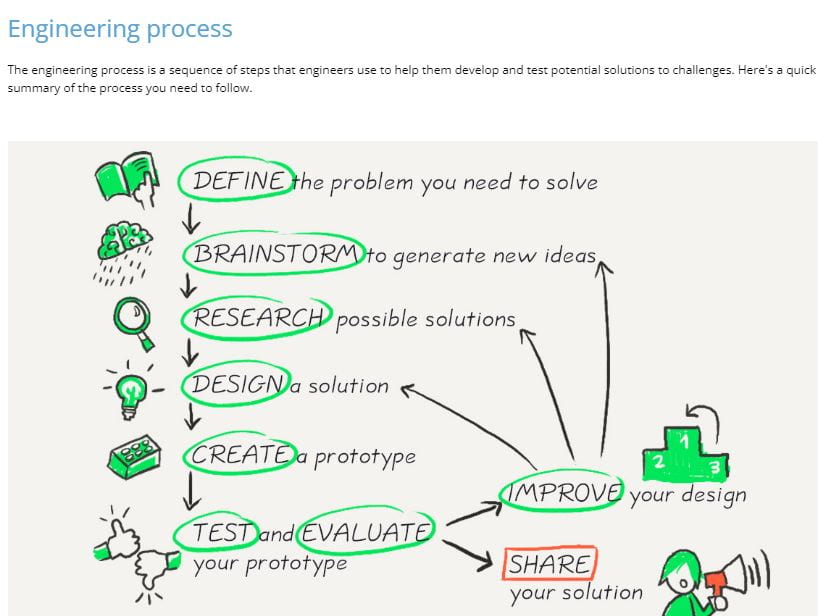
Define:
The first step was define. Our group had definition of the problem was…
Earthquakes, while they are not a solvable problem, there are ways to mitigate the damage they can cause to infrastructure, buildings and the livelihood of people. A fantastic way to reduce these horrific consequences is the use of earthquake-proof buildings. These are engineered and structural sound biddings which employ various mechanisms and structural techniques to resist a shock. These include Counterweights, moving bases, triangular frames, deep foundations, support beams and pistons which move the building in an opposite direction to the direction of the wave. In a scale model, we can use some of these concepts even if they are only made from Pasta. Our problem is earthquakes and our solution is creating a building that can withstand them.
Brainstorm:
Our group had brainstormed after defining, this was done in the same period that was given for the define process. Our brainstorm had consisted of, counterweights, different shapes such as triangles, stable strong bases and many supports on the building.
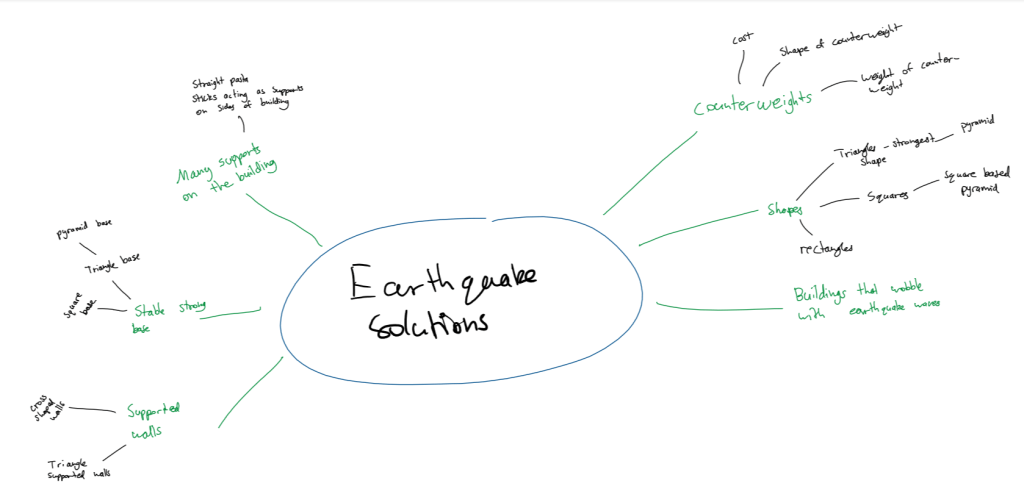
Research:
For research, we had all researched separately, later sharing our information we’ve learnt towards the end of the period. Some of our research included:
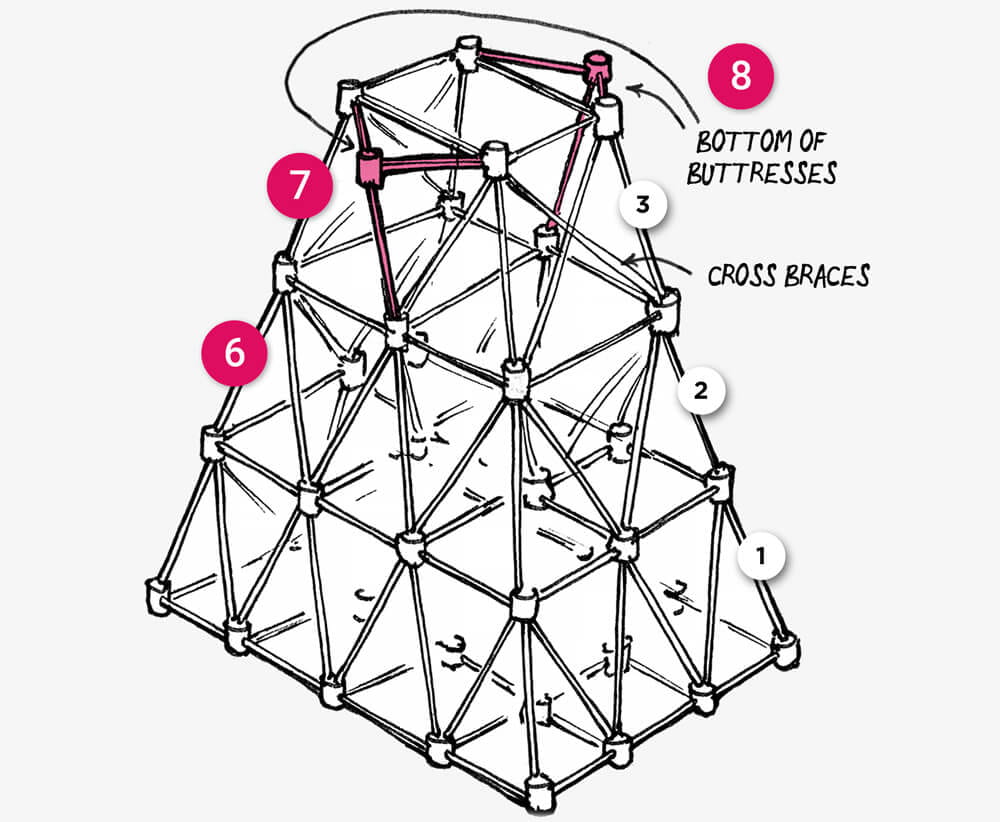
- Counterweights, which are heavy dense balls located in the middle of a tall building, in which as seismic waves pass up through the structure, the ball tilts in the opposite direction stabilising the structure.
- Triangles are the strongest shapes in construction. A reason for this is when any weight is placed on a triangle, the weight is evenly distributed to all 3 sides. ATriangles are the best go-to for earthquake-proof buildings as Their shape provides more resistance to twisting motions, reducing the swaying of a building during a quake.
- Strong bases are needed so the main structure does not collapse. Strong bases need to be specifically built with earthquake-proofing techniques so seismic energy can travel through them down onto the ground.
Design
After researching, we as a group created a design. Our design consisted of 4 square-based pyramids, then connecting forming a rectangular prism, which formed a triangle to a trapezium on top with a base of 5cm-5cm and beams that would support the top triangle down to the base. This was planned to be 60cm tall reaching the minimum. Altogether, this structure was planned to use 40-45 sticks of pasta, which would mean we would have 15-20 grams of blu tack.
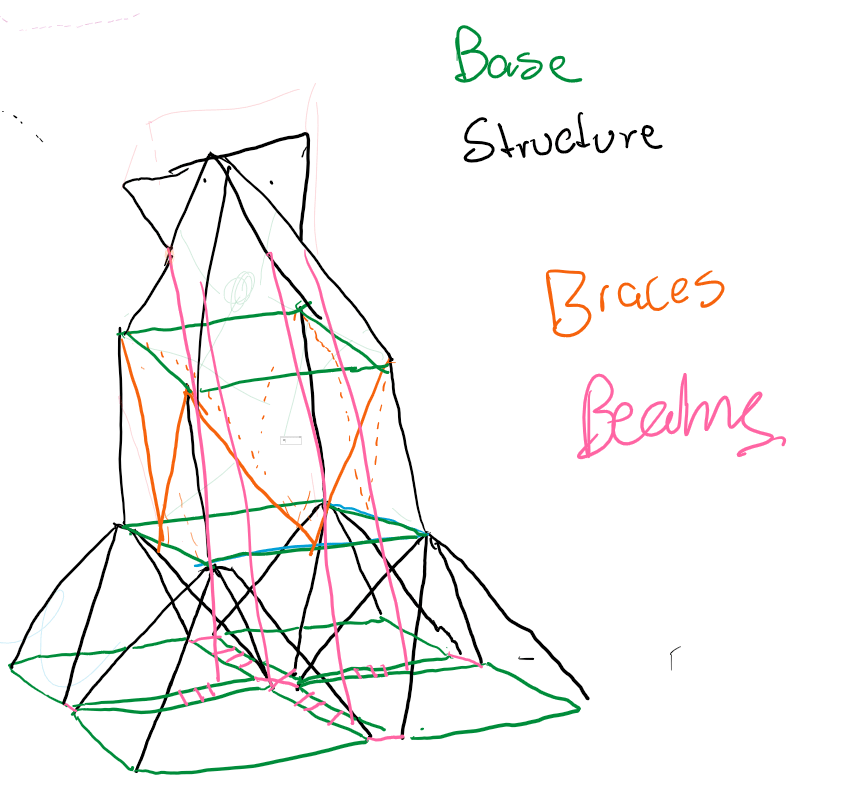
Create
On Monday week 6, defined our problem and brainstormed as a group. Then on Tuesday we made our design and started creating our construction. Our first phase of engineering was creating the 4 square-based pyramids.
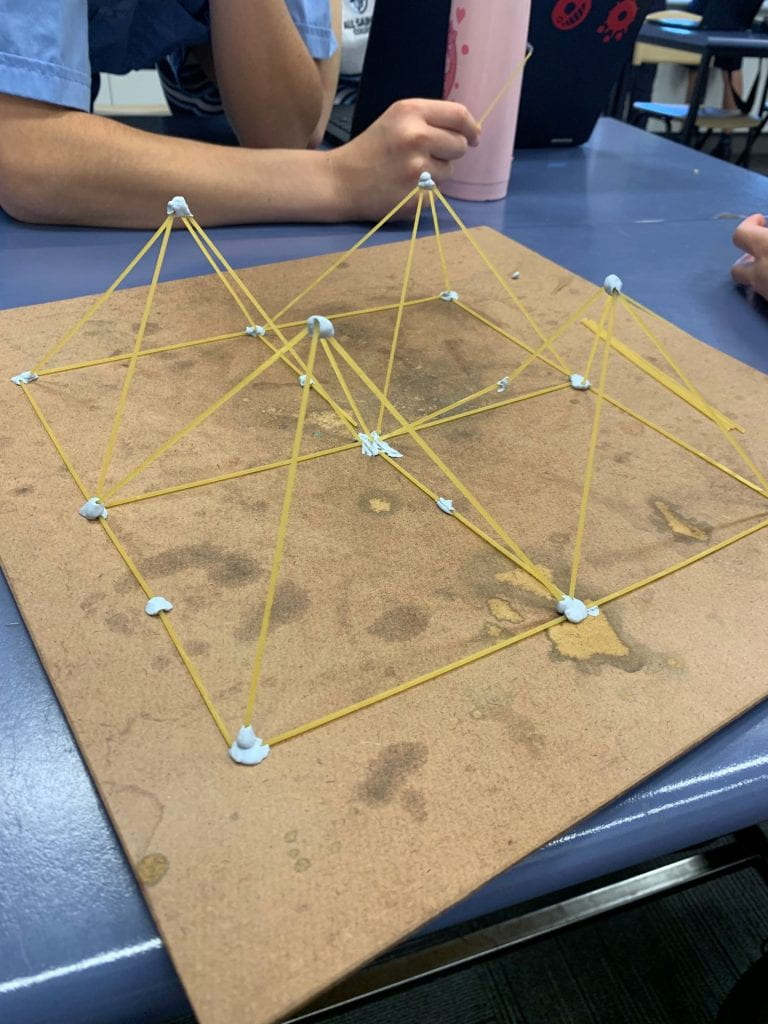
On Thursday week 6, we added 4 pasta sticks connecting the tip of the pyramids and added the rectangular prism, which was the tallest part of the structure, so lots of support was needed to keep it upright.
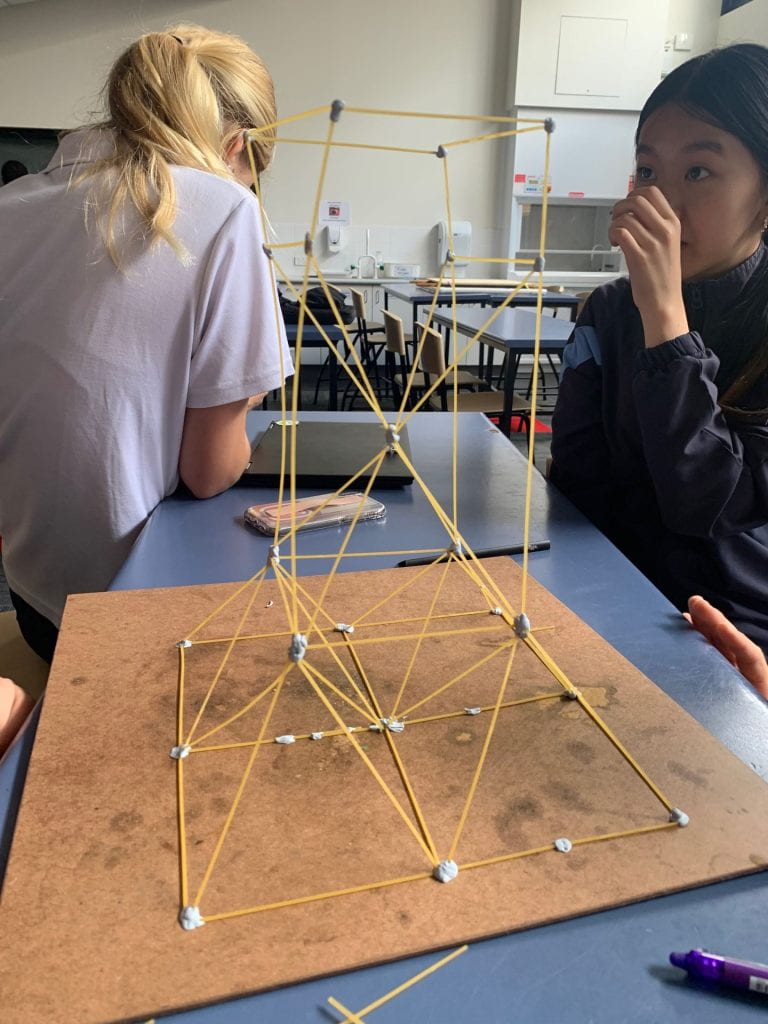
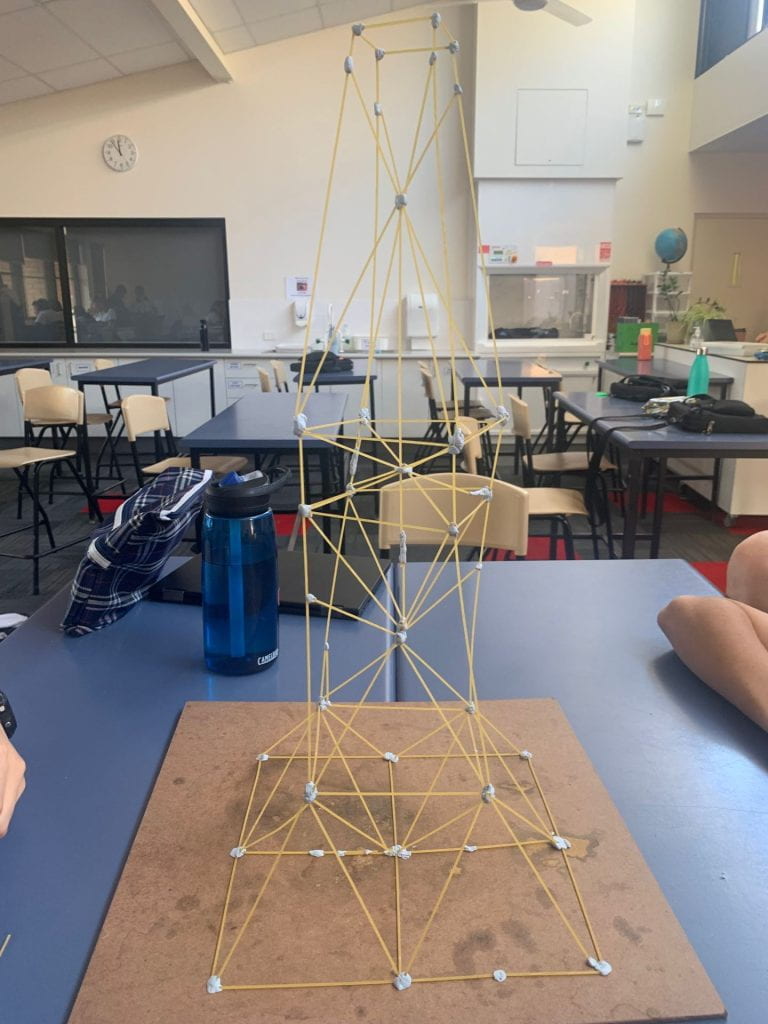
On Monday and Tuesday week 7, our group added the final top piece which had reached the 60cm mark. This took a lot of time as we needed to stabilise the rectangular prism below as well as the new top piece. After finishing, we had proceeded to testing before the finale test on Tuesday period 4.
Test and evaluate
For testing, we had tested on Thursday week 6, Monday week 7 and Tuesday week 7, before the final test. Our structure had successfully survived all earthquake simulations, from Thursday week 6 onto Tuesday week 7, which was the final test. After the final test, our structure collapsed. Overall, our creation process was not the best as we had not stuck to our plan. Our rectangular prism that was on top of the, was taller than expected, which had consumed more time, as we needed to restabilise and re-support our structure.
Some improvements I’d add to our design would be adding cross braces to our rectangular prism, which would increase the stability and support of our structure. As well as this, I would add braces in the trapezium on top of the rectangular prism.
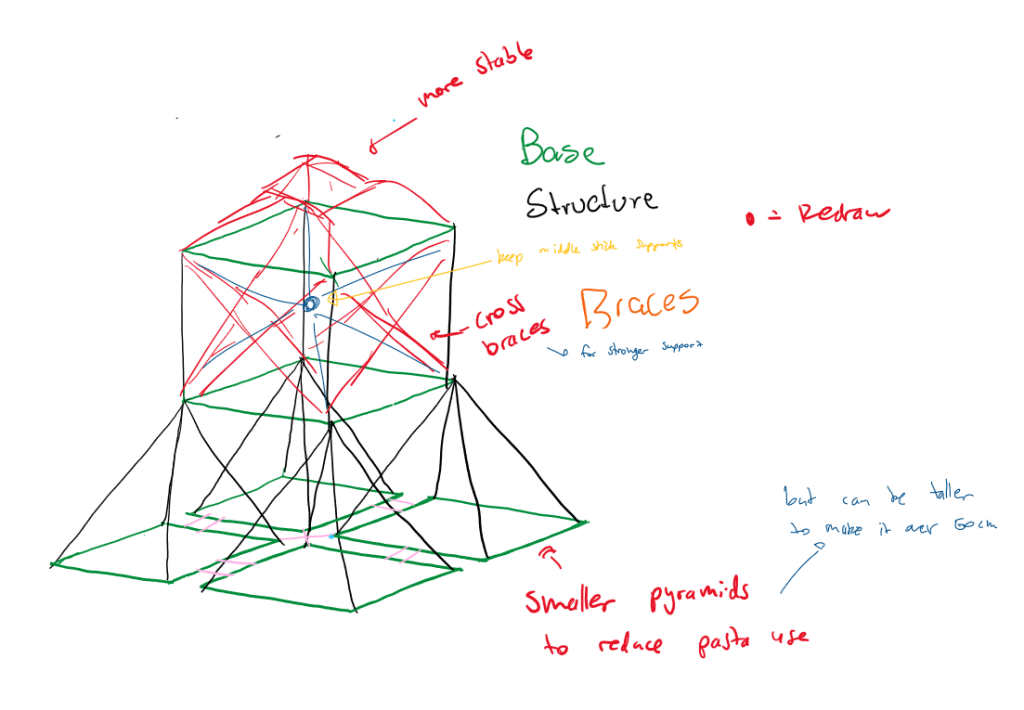
Conclusion
Overall, this project was very fun but very rushed. We didn’t have a lot of time to test and re-evaluate and re-improve our design. I didn’t really like this and if I redid this project, I would’ve done more work at home and collaborated with my teammates outside of the science periods, as the science periods were very precious and we had wasted some time rethinking things such as how to stabilise and support the rectangular prism, in which was longer than expected. Collaborating with my teammates outside of school would’ve given us more time to rethink things and redesign our design.